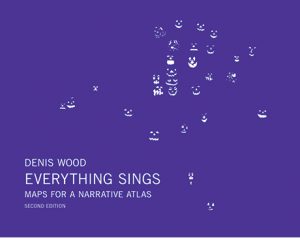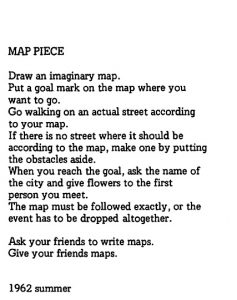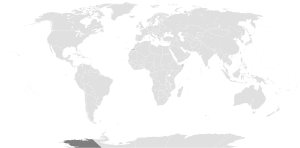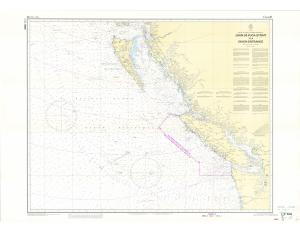All posts by martin lewis
MAPS FOR A NARRATIVE ANALYSIS
http://sigliopress.com/book/everything-sings/
That a cartographer could set out on a mission that’s so emotional, so personal, so idiosyncratic, was news to me.
—IRA GLASS, host of This American Life, from his introduction to Everything Sings.

Iconoclastic geographer Denis Wood has created an atlas unlike any other. He surveys his small, century-old neighborhood Boylan Heights in Raleigh, North Carolina by first paring away the inessential (scale, orientation, street grids), then by locating the revelatory in the unmapped and unmappable: radio waves permeating the air, the paperboy’s route in space and time, the light cast by street lamps, Halloween pumpkins on porches.
His joyful subversion of the traditional notions of map making forge new ways of seeing not only this particular place, but also the very nature of place itself. In pursuit of a “poetics of cartography,” Wood makes maps in which the experience of place is primary, and the eye is attuned to the invisible, the overlooked, and the seemingly insignificant.
These maps have a traditional rigor, but they also have “fingerprints”—a gamut of subjective arguments about the relationships between social class and cultural rituals, about the neighborhood as “transformer,” about maps’ impermanence and fragility—rejecting the idea that they convey a single, static, objective truth. Together, they accumulate into a multi-layered story about one neighborhood that tells the larger, universal story of how we understand and define the places we call home.
Hand-Painted Maps of Area Codes, Housing Prices, and More That Make the Mundane Beautiful
MAP PIECE, 1962 summer. Yoko Ono

Cartography and Mapping

Cartography and mapping, as science or as a discipline in the scientific context, have not escaped postmodern criticism. This is known as the contemporary critique of cartography. Nikolas Huffman has, from the standpoint of map design in postmodernism, analysed maps and mapping within the postmodernistic framework. He addresses the postmodern critique by outlining four different definitions of postmodernism and its relation to contemporary cartographic critiques. These categories are: mapping and postmodern style; cartography and postmodern social theory; capitalism and the economy of mapping; and cartography and poststructuralism (for more details see Huffman 1996).
Huffman mentions some postmodernists in cartography such as Denis Wood, J.B. Harley, Richard Helgerson, Barbara Belyea, and Robert Rundstrom. These authors question the apolitical and scientific status of cartography.
These critiques have disputed the way that language and the production of meaning have been theorized in cartography research on maps and mapping, and introduced new ways of understanding how we interact and communicate with and through maps. […] They have also pointed towards a broader sociology of mapping in which maps and mapping can be understood as artefacts within our social and material culture, and have demanded that greater attention be paid to issues of representation, politics, and social action (emphases added, Huffman 1996: 35–36).
The above statement points out new tendencies in contemporary cartography which fall within the postmodern context. These new ways of understanding maps are referred to as being an alternative to the scientific-empirical approach in cartography during modernity. Thus the map is an artefact (material or ideal) within the social and cultural context in which it is created and used, and is no longer a device with an objective, neutral, and value-free character. In other words, all these new visions in cartography and mapping are framed within the new postpositivistic epistemology of sciences.
modern cartography
Modern cartography covers a wide and complex range of subjects. Maps may portray political boundaries or oceanic depth, the geological structure of the earth’s surface or the density and distribution of its population; they may be used to represent, in graphic form, inventories of the world’s natural and industrial resources or of educational facilities. Military requirements, it is true, still retain a high priority in map making. However, it is equally true that the services provided by cartography are being increasingly utilized for peaceful purposes. This fact is perhaps the dominant feature of the development of car- tography during the last hundred years. The progress of the Science of Cartography is of equal concern to all nations…. (United Nations 1949: Introduction). Continue reading modern cartography

 Follow
Follow